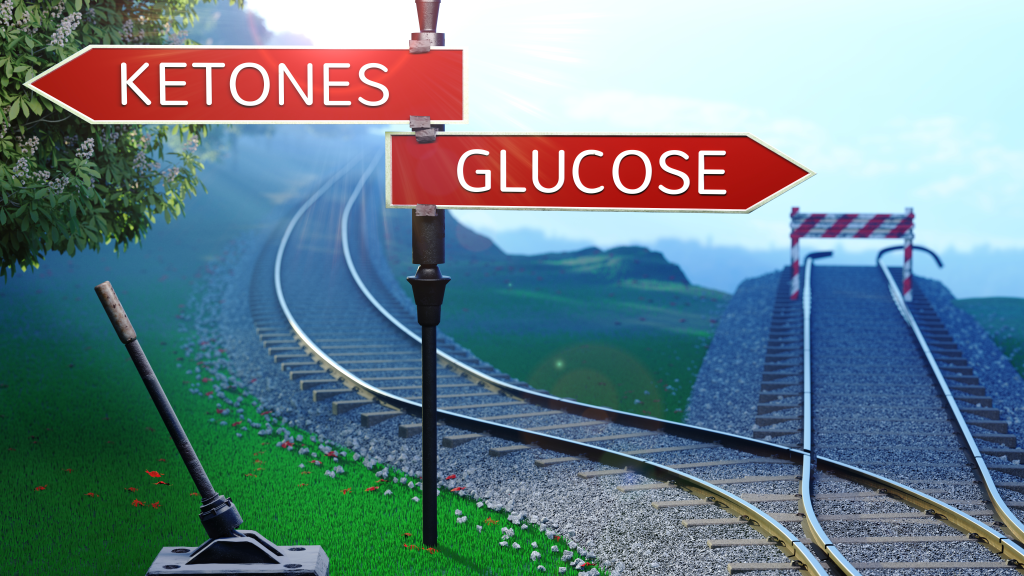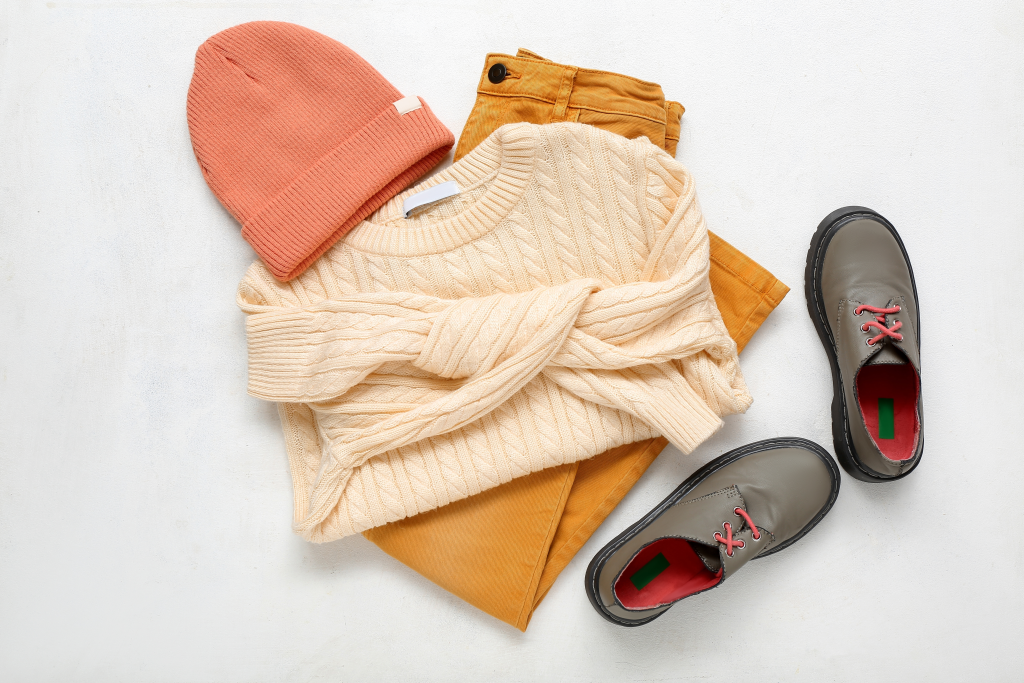At a glance
Fasting involves voluntarily abstaining from food and calorie-containing drinks to allow the body to shift from digestion to fat burning and restoration. As the body enters ketosis, it begins using stored fat for energy, which may promote metabolic flexibility and improved focus. Temporary sensations of feeling cold can occur as the body adapts to these metabolic changes.
Feeling cold during a fast is a common experience, and it’s a sign that your body is making important metabolic shifts.
As you begin to burn fat for fuel, blood flow is redirected toward fat stores, and your digestive system goes into rest mode, all of which can reduce internal heat production.
Discover why it’s normal to feel cold while fasting and learn simple strategies to stay warm during periods of caloric restriction.
What is fasting?
Fasting involves the voluntary abstinence from all foods and calorie-containing beverages, allowing the body to reset and shift its focus from digestion to restoration and fat burning.
The length of a fast can vary widely, lasting from several hours to several days, depending on your goals.
One of the most popular and sustainable approaches is intermittent fasting, which alternates between periods of eating and fasting. A common method is the 18:6 schedule, characterized by fasting for 18 hours and eating within a six-hour window.
During periods of calorie restriction, the body shifts from using readily available glucose to tapping into stored body fat for energy once glycogen reserves are depleted.
This natural transition into a metabolic state referred to as ketosis encourages the breakdown of fat, which can lead to reduced fat mass.
Many people also experience more consistent energy and improved focus as the brain begins to efficiently use ketones, a byproduct of fat metabolism, for fuel.
Other prolonged fasting routines, such as 24-hour or 48-hour fasts, can deepen ketosis and accelerate the body’s fat-burning processes.
These extended fasts give the digestive system more time to rest and may further enhance metabolic flexibility, allowing the body to switch more efficiently between using glucose and fat as fuel.
A study published in eClinical Medicine compared the weight loss and health benefits of intermittent fasting with continuous energy restriction (CER), widely known as calorie restriction.1
The authors summarized, “Our findings suggest that intermittent fasting may have beneficial effects on a range of health outcomes for adults with overweight or obesity, compared to CER.”
Watch the video below to learn why you may be feeling cold when fasting.
Is it normal to feel cold while fasting?
Yes, feeling cold during fasting is a common physiological response and may present as cold extremities or a general sensation of chilliness.
During periods of caloric restriction, low blood sugar and insulin levels initiate hormonal changes that trigger fat oxidation and the production of ketones for energy.
As the body transitions into a fat-adapted state, thermogenesis may temporarily decrease, contributing to the sensation of cold.
It’s believed this is linked to metabolic shifts within the mitochondria, which are the energy powerhouses of the cell. As the body transitions from burning glucose to utilizing fatty acids and ketones for fuel, the mitochondria undergo a period of adaptation.
While energy production becomes more efficient when ketones are available, cells initially generate less heat, leading to a temporary reduction in thermogenesis.
“In most individuals, this cold sensation is temporary and resolves as metabolic flexibility improves and the body becomes more efficient at utilizing ketones as a primary energy source,” explains Dr. Berg.

Three reasons why you feel cold while fasting
In addition to the thermogenic changes associated with fat-adaptation, there are other factors that can contribute to feeling cold during periods of caloric restriction.
Here are three potential reasons why you may be feeling chilly while fasting.
1. Resting digestive system
During digestion, the body redirects large amounts of blood to the digestive system and vital organs to support nutrient absorption. This process generates heat, contributing to a warmer body temperature.
However, as the body doesn’t need to digest food during fasting, blood flow is redistributed to other areas. As a result, less blood flows to the extremities and skin, which can contribute to feeling cold.
2. Redirected blood flow
During fasting, blood flow is directed toward brown adipose tissue, a specialized type of fat that plays a crucial role in regulating body temperature.
While brown fat’s primary function is heat production, the redirection of blood flow to this tissue can result in a temporary sensation of coldness, particularly in the extremities.
A study published in Cell Research supports this, indicating that fasting activates a series of gene expressions and hormonal changes that can temporarily influence the body’s heat regulation mechanisms.2
3. Nutrient deficiencies
Inadequate nutrient stores, often linked to poor dietary habits, can contribute to feeling chilly while fasting.
Iodine, selenium, and zinc are essential for proper thyroid function, which is crucial in regulating body temperature. A deficiency in these nutrients can impair thyroid function, reducing the body’s ability to generate heat.
Additionally, vitamins and minerals such as B vitamins and magnesium are crucial for energy production and metabolic processes, and nutrient deficiencies can slow down your metabolic rate, further contributing to the sensation of feeling cold.

Should you stop fasting if you feel cold?
Feeling cold during fasting is a temporary response as the body adapts to using fat for fuel. Interrupting your fast during this phase may delay the adaptation process and slow progress.
It’s important to allow your body time to adjust, as these temperature fluctuations are a natural part of the transition to ketosis and fat-burning.
However, if cold sensations persist beyond the initial adaptation phase, it’s recommended to consult with a healthcare professional to explore and rule out other potential underlying causes.

How to warm up while fasting
While experiencing cold sensations while fasting can be uncomfortable, it often indicates that your body is beginning to undergo key metabolic adaptations associated with caloric restriction.
Here are eight steps you can take to keep cold sensations at bay.
1. Follow Healthy Keto®
To help prevent cold sensations, combine your fasting routine with a nutritious low-carb diet such as Healthy Keto® during your eating windows.
Healthy Keto emphasizes nutrient-dense, whole foods such as organic produce, high-quality protein options, and healthy fats that support metabolic health and provide essential vitamins and minerals.
In addition, following a ketogenic diet helps maintain ketosis and fat-burning even when you are eating, which speeds up metabolic adaptation and helps your body generate heat more efficiently.
2. Prioritize healthy fats
Adequate calorie intake is essential for maintaining optimal heat regulation, and it’s crucial to incorporate enough healthy fats during your eating window.
Nutrient-dense options such as avocados, pasture-raised eggs, organic cheese, grass-fed beef, nuts, and fatty fish provide sustained energy and help your body maintain warmth during fasting.
These fats not only support hormonal balance and metabolic function but also ensure you’re fueling your body sufficiently before entering a fasting phase.

3. Replenish key nutrients
Avoiding processed foods with little to no nutritional value and prioritizing nutrient-rich whole foods is essential for maintaining warmth and overall well-being while fasting.
Opt for whole foods rich in essential vitamins and minerals, particularly those that support thyroid function and metabolic health, such as iodine, selenium, and magnesium.
While iodine can be obtained from foods such as seaweed, cod, and eggs, selenium is abundant in Brazil nuts, sunflower seeds, and sardines.
Magnesium-rich foods include dark leafy greens, pumpkin seeds, flax seeds, dark chocolate, salmon, and avocados.
4. Keep active
Low-intensity exercise can be an effective way to counter feeling cold while fasting and support your efforts to lose weight.
Gentle activities such as walking and stretching help stimulate circulation and generate body heat without placing too much stress on the body during caloric restriction.
If you spend long periods sitting at work or home, make a habit of standing up and moving around for a few minutes every hour to improve blood flow and maintain a more stable body temperature.
5. Enjoy a hot beverage
A warm beverage can help raise your body temperature and provide comfort, especially if you’re experiencing cold hands or fingers during fasting.
Fasting-friendly drinks such as green tea, black coffee, or Bulletproof coffee are excellent options.
These beverages not only support fat burning but may also help curb cravings if you start to feel hungry or experience low energy.
Bulletproof coffee, made with healthy fats such as coconut oil and grass-fed butter, is especially helpful for promoting satiety, maintaining steady energy, and supporting mental clarity during fasting periods.

6. Wear warm clothing
Wearing warm clothing is an effective way to retain body heat, especially during the early stages of keto adaptation when you may feel colder than usual.
For optimal insulation, choose clothes made from materials such as wool, silk, or polypropylene. These fabrics are far more effective at trapping heat and wicking moisture compared to cotton, helping you stay warm and dry throughout your fasting window.
7. Take a hot shower
A warm bath or hot shower is an effective way to quickly raise your body temperature and alleviate cold sensations during fasting.
To maximize the warming effect of a shower or bath, keep the bathroom door closed to trap steam and create a cozy, heat-retaining environment.
8. Adjust the climate control
If you’re still feeling cold despite dietary and lifestyle adjustments, consider increasing the ambient temperature in your home or workspace until your body becomes fully fat-adapted.
Key takeaways
- Fasting involves voluntarily abstaining from food and calorie-containing drinks, allowing the body to shift from digestion to restoration and fat burning.
- Intermittent fasting, such as the 18:6 schedule, promotes ketosis, where the body begins using stored fat for energy, supporting metabolic flexibility and steady focus.
- Feeling cold while fasting is a temporary response as the body adapts to fat burning and reduced thermogenesis during this transition.
- You can stay warm while fasting by eating nutrient-dense foods during eating windows, staying active, drinking warm beverages, and wearing insulating clothing.
FAQs
1. Is it normal to feel cold while doing intermittent fasting?
Yes, it’s normal to feel chilly during the early stages of adapting to an intermittent fasting schedule.
In fact, having cold hands and feet can actually indicate that your body is transitioning into ketosis, a metabolic state that promotes fat burning.
2. Why do I feel cold while doing intermittent fasting?
Feeling cold during intermittent fasting is typically related to the body diverting energy toward fat burning instead of generating body heat. This is usually a temporary response as your metabolism shifts into ketosis and your cells adapt to using fat as the primary fuel source.
3. How can I avoid feeling cold while fasting?
You can warm up your body while fasting by wearing warm clothes, taking a bath, drinking hot tea, exercising, and replenishing vitamins and minerals.
In addition, consuming healthy fats, nutrient-dense whole foods, and spicy foods during your eating window can support thermogenesis and help minimize cold sensations while your body adapts to fasting.
4. Can nutrient deficiencies make you feel cold?
Yes, a lack of essential nutrients can lower body temperature. Key nutrients for thyroid health, such as iodine, selenium, and zinc, support the body’s heat-regulation processes, and nutritional deficiencies can contribute to feeling cold.
5. Why does fat adaptation make you cold?
Several factors influence your body temperature during fat-adaptation, including reduced insulin and blood glucose levels, decreased heat production from digestion, and the redirection of blood flow to fat stores.
6. Is being cold a sign of ketosis?
Yes, feeling cold can indicate that your body is entering ketosis. As your body shifts from burning glucose to utilizing body fat for energy, a range of metabolic changes can lead to a temporary drop in body temperature.
7. Should I stop fasting if I feel cold?
No, feeling cold during a fast doesn’t mean you have to stop. It may simply indicate that your body is burning fat and adapting to metabolic changes.
8. Does ketosis affect your body temperature?
Yes, many people report feeling chilly during the early stages of ketosis. As blood sugar decreases and blood flow is redirected to the body’s fat reserves, heat regulation can be temporarily affected.
9. Can a low-carb or keto diet make you feel cold?
Yes, a low-carb or ketogenic diet can temporarily cause a lower body temperature as your body adapts to ketosis and fat-burning.
10. How long does it take to adapt to ketosis?
How long it takes to adapt to ketosis depends on factors such as your metabolic flexibility, activity levels, and overall health status.
While most people become fully fat-adapted within two weeks, others may require up to six weeks to adapt to ketosis.


















